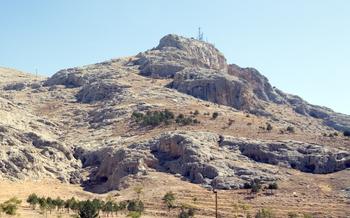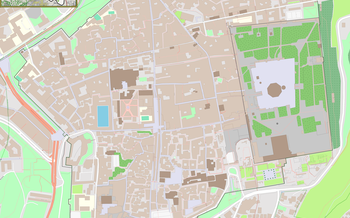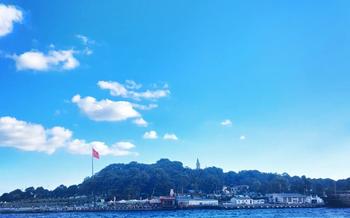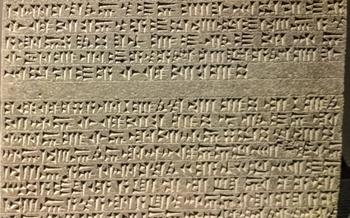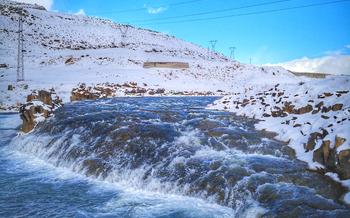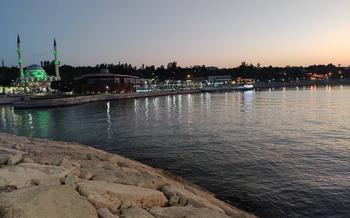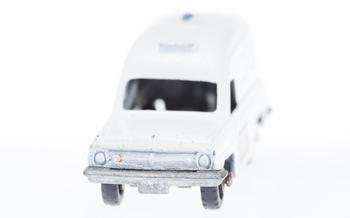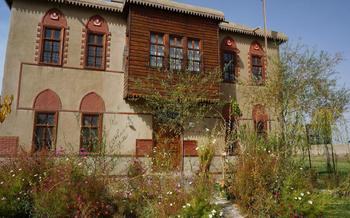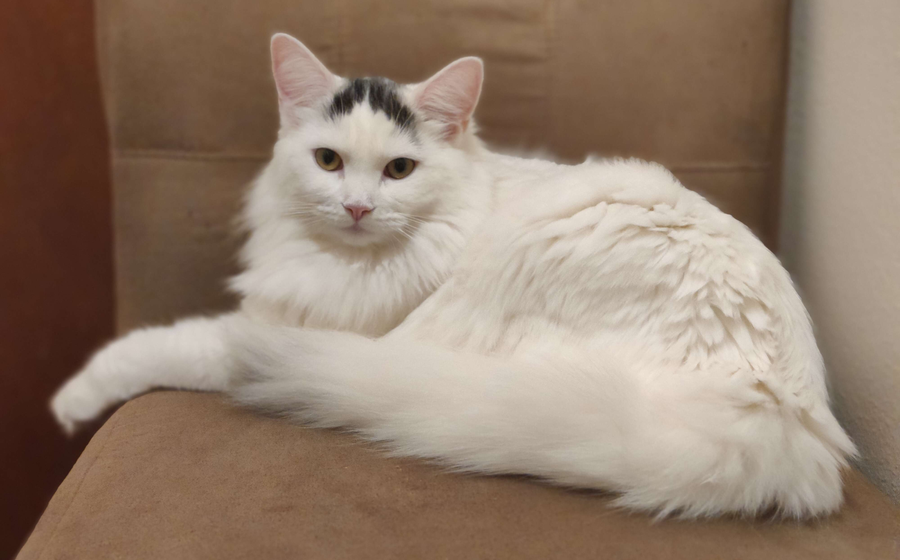
Kurubaş Relief
- Van's Ancient Wonder: Unveiling Kurubaş Relief
- A Journey Through Time: Exploring the Relief's History
- A Masterpiece of Ancient Art: Deciphering the Relief's Symbolism
- The Relief's Enduring Legacy: A Testament to Human Creativity
- Getting to Know the Kurubaş Relief: Practical Information
- Step into History: A Guided Tour of the Relief
- A Photographer's Paradise: Capturing the Relief's Beauty
- Beyond the Relief: Exploring Van's Cultural Treasures
- A Culinary Journey: Savoring Van's Delights
- Shopping for Souvenirs: A Memento of Van
- Accommodations for Every Traveler: Where to Stay in Van
- Getting Around Van: Transportation Options
- Safety and Security: Ensuring a Smooth Trip
- When to Visit Van: Finding the Ideal Time
- Insider Tip: Unforgettable Views from the Van Fortress
Van's Ancient Wonder: Unveiling Kurubaş Relief
In the heart of Van, Turkey, lies an enigmatic masterpiece that has captivated historians, archaeologists, and travelers alike – the Kurubaş Relief. This colossal rock carving, dating back to the 9th century BC, stands as a testament to the rich cultural heritage of the region. Its intricate carvings and symbolic imagery offer a glimpse into the beliefs, traditions, and artistic prowess of ancient civilizations.
Location and Accessibility: The Kurubaş Relief is situated on the slopes of Mount Erciyes, approximately 15 kilometers from the city of Van. Visitors can easily reach the site by car, taking the scenic road that winds through picturesque landscapes and offers breathtaking views of Lake Van. Guided tours and local transportation options are also available for those who prefer a hassle-free experience.
Symbolism and Artistic Value: The relief depicts a procession of gods and goddesses, mythical creatures, and human figures, each adorned with intricate details and symbolic attributes. Scholars believe that the relief was created to honor the Urartian king Sarduri II and commemorate his military victories. The vivid portrayal of divine figures and their interactions provides valuable insights into the religious beliefs and mythology of the Urartian civilization.
Practical Information for Visiting: Before embarking on your journey to the Kurubaş Relief, it's essential to plan your visit and consider the following practical information:
- Visiting Hours: The relief is open to the public daily, with varying hours depending on the season. Check local sources for the most up-to-date information.
- Admission Fees: A small entrance fee is required to access the site. Prices may vary, so it's advisable to inquire locally.
- Guided Tours: Guided tours are available in multiple languages, providing in-depth insights into the history, symbolism, and cultural significance of the relief.
- Facilities: Basic facilities such as restrooms and a small café are available near the site, ensuring a comfortable visit for travelers.
A Journey Through Time: Exploring the Relief's History
The Kurubaş Relief is a testament to the rich history and cultural heritage of the Van region. Its origins can be traced back to the 8th century BC, during the reign of the Urartian Kingdom. The Urartians were an ancient civilization that inhabited the Armenian Highlands, and they left behind a legacy of impressive architectural and artistic achievements. The relief is believed to have been commissioned by King Sarduri II, one of the most powerful Urartian rulers, as a dedication to the gods and a celebration of his military victories.
The relief's location on the rocky outcrop overlooking the Van Fortress suggests that it served a significant religious and political purpose. It was positioned along a processional route leading to the fortress, where important ceremonies and rituals were held. The relief's proximity to the Van Fortress, the ancient capital of the Urartian Kingdom, further emphasizes its importance as a symbol of power and authority.
Over the centuries, the relief has been subjected to various natural and human-made challenges. It has withstood earthquakes, weathering, and the passage of time. In the 19th century, the relief was rediscovered by European travelers and archaeologists, who recognized its historical and artistic value. Since then, it has become a popular tourist destination and a source of inspiration for scholars and artists alike.
The Kurubaş Relief is not only a remarkable work of art but also a valuable source of information about the Urartian civilization. It provides insights into their religious beliefs, cultural practices, and artistic traditions. The relief's depiction of gods, goddesses, and mythical creatures offers a glimpse into the Urartian pantheon and their understanding of the divine realm. Furthermore, the relief's inscriptions in cuneiform script have provided valuable information about Urartian history, language, and political organization.
A Masterpiece of Ancient Art: Deciphering the Relief's Symbolism
The Kurubaş Relief is a true masterpiece of ancient art, captivating viewers with its intricate symbolism and profound meanings. The relief depicts a pantheon of gods and goddesses, each with their own unique attributes and iconography. The central figure is the mighty god Haldi, the patron deity of the Urartian kingdom. He is depicted standing tall, holding a thunderbolt in his right hand and a double-headed ax in his left, symbolizing his power and authority.
The relief also features representations of other important deities, including the goddess Arubani, the god Teisheba, and the goddess Shivini. Each deity is portrayed with specific gestures, clothing, and attributes that hold symbolic significance. For example, Arubani is often depicted with a mirror, symbolizing her role as the goddess of beauty and fertility. Teisheba, the god of thunder and rain, is shown holding a lightning bolt, while Shivini, the goddess of the sun, is depicted with a radiant halo around her head.
The interplay between the human and divine realms is a prominent theme in the relief. The Urartian kings are shown paying homage to the gods, seeking their favor and protection. The relief also depicts scenes of battle and triumph, highlighting the close relationship between the Urartian monarchy and the divine sphere.
The artistic style of the relief is a blend of realism and symbolism. The figures are depicted with great detail and precision, capturing the nuances of their facial expressions and body movements. However, the overall composition is highly symbolic, with each element carefully arranged to convey a specific message or meaning. The use of perspective and depth adds to the realism of the relief, creating a sense of three-dimensionality.
The Relief's Enduring Legacy: A Testament to Human Creativity
The Kurubaş Relief has endured the passage of time, standing as a testament to the creativity and resilience of ancient civilizations. Despite facing the challenges of natural elements, political upheavals, and human intervention, the relief has maintained its grandeur, conveying its messages and symbolism to generations.
Preservation efforts have played a crucial role in ensuring the relief's survival. Local authorities and international organizations have collaborated to protect and restore the site, employing techniques to stabilize the rock surface and prevent further erosion. Regular monitoring and maintenance help preserve the relief's integrity, ensuring its continued existence for future generations.
The Kurubaş Relief has left an indelible mark on subsequent art and cultural movements. Its unique style, symbolism, and subject matter have influenced artists, scholars, and historians alike. The relief's depiction of gods, goddesses, and mythical creatures has resonated with diverse cultures, inspiring creative interpretations and adaptations throughout history.
As a symbol of cultural heritage and identity, the Kurubaş Relief holds immense significance for the people of Van and Turkey. It represents a tangible link to their ancient past, a source of pride and inspiration. The relief's enduring presence serves as a reminder of the rich cultural tapestry that has shaped the region, fostering a sense of continuity and belonging.
Ongoing research and discoveries continue to shed light on the Kurubaş Relief's history and significance. Archaeological excavations in the vicinity have unearthed valuable artifacts and provided insights into the context and purpose of the relief. Scholars from various disciplines collaborate to decipher the relief's symbolism, explore its connections to ancient mythologies, and piece together the story of its creation.
The Kurubaş Relief stands as a testament to human creativity, cultural exchange, and the enduring power of art. Its survival through millennia speaks volumes about the human spirit's ability to transcend time and leave a lasting legacy for generations to come.
Getting to Know the Kurubaş Relief: Practical Information
The Kurubaş Relief lies within the historical Van Fortress, a sprawling citadel that once guarded the ancient city. To reach the fortress and the relief, visitors can take a short walk or drive from the city center. Follow the signs or ask for directions to the fortress, which is a prominent landmark in Van. Once inside the fortress, the relief can be found on the southern wall, near the entrance.
The fortress is open to the public during daylight hours, and there is no admission fee. Visitors are free to explore the relief at their own pace or join a guided tour for a more in-depth understanding of its history and symbolism. Guided tours are typically offered by local agencies or tour operators and can be arranged in advance or on-site.
Whether opting for a guided tour or self-guided exploration, visitors should plan to spend at least an hour at the Kurubaş Relief to fully appreciate its beauty and significance. Comfortable shoes and sun protection are recommended, as the fortress is largely exposed to the elements.
Step into History: A Guided Tour of the Relief
Immerse yourself in the captivating history of the Kurubaş Relief by embarking on a guided tour. Led by local experts and historians, these tours offer an unparalleled opportunity to delve deeper into the relief's significance and symbolism. With their specialized knowledge, guides bring the ancient carvings to life, providing insights into the lives, beliefs, and artistic traditions of the people who created this masterpiece.
As you walk among the intricate carvings, your guide will unveil the stories and legends associated with the relief, shedding light on the cultural and religious context of its creation. They will explain the symbolism of the depicted figures, their attributes, and the interplay between the human and divine realms.
Through storytelling and anecdotes, guided tours create an immersive experience that transports you back in time. You'll gain a profound understanding of the relief's historical importance, its artistic value, and its enduring legacy as a testament to human creativity and cultural heritage. Whether you're a history buff, an art enthusiast, or simply curious about ancient civilizations, a guided tour of the Kurubaş Relief is an unforgettable journey into the past.
A Photographer's Paradise: Capturing the Relief's Beauty
The Kurubaş Relief is a photographer's dream, offering endless opportunities to capture its intricate details and grandeur. The ideal lighting conditions for photography occur during the golden hours, just after sunrise and before sunset, when the warm light casts a soft glow on the relief, enhancing its textures and colors. To fully capture the relief's magnificence, it's recommended to use a wide-angle lens to fit the entire scene into the frame. Experimenting with different angles and perspectives can lead to unique and striking compositions. While photography is generally allowed, it's essential to be mindful of any restrictions or permit requirements, which may vary depending on the time of year or specific regulations.
Beyond the Relief: Exploring Van's Cultural Treasures
Van's cultural tapestry extends beyond the Kurubaş Relief, offering a wealth of historical sites, museums, and cultural experiences to enrich your journey. Embark on a voyage of discovery as you explore ancient ruins, delve into local traditions, and savor the region's culinary delights.
Discover the majestic Van Fortress, a testament to the city's rich past, with its imposing walls and panoramic views. Immerse yourself in the world of art and history at the Van Museum, housing an impressive collection of artifacts from the region's diverse civilizations.
Explore the Armenian Church of the Holy Cross, a poignant reminder of Van's multicultural heritage, showcasing exquisite architecture and intricate carvings. For a glimpse into the city's vibrant contemporary art scene, visit the Van State Art and Sculpture Museum, featuring works by local and international artists.
Indulge in the flavors of Van's culinary delights, tantalizing your taste buds with traditional dishes such as "Van kahvaltısı" (Van breakfast), "murtuğa" (stuffed grape leaves), and "işkembe çorbası" (tripe soup). Experience the bustling atmosphere of local markets, where you can find fresh produce, spices, and handicrafts, immersing yourself in the vibrant tapestry of daily life.
Van's cultural treasures await your exploration, offering a journey through history, art, and gastronomy. Embrace the opportunity to discover the hidden gems of this captivating city, creating lasting memories that will ignite your wanderlust.
A Culinary Journey: Savoring Van's Delights
Taste the Authentic Flavors of Van's Cuisine
Van's culinary scene is a delightful blend of traditional Turkish flavors and unique regional influences. Indulge in must-try dishes like "Van kahvaltısı," a hearty breakfast spread featuring fresh cheeses, honey, and local bread. Don't miss the chance to sample "murtuğa," a savory pastry filled with minced meat and herbs. For a taste of local street food, try "kelle paça," a hearty soup made with sheep's head and trotters.
Top Restaurants and Eateries for a Culinary Adventure
Van Tandır Restaurant: Experience traditional Turkish cuisine cooked in a traditional clay oven. Şeref Büryan: Savor mouthwatering "büryan," a tender lamb dish slow-cooked in an underground oven. Van Gölü Balıkçısı: Delight in freshly caught fish from Lake Van, prepared with local herbs and spices. Çaycıoğlu Et Lokantası: Indulge in succulent grilled meats and kebabs, a signature of Turkish cuisine. Van Kahvaltısı Evi: Start your day with a delicious breakfast spread, featuring local cheeses, honey, and fresh bread.
Street Food Delights and Local Markets
Explore Van's vibrant street food scene, where you can find delicious snacks like "dolma" (stuffed grape leaves) and "lahmacun" (Turkish pizza). Visit local markets for fresh produce, spices, and traditional sweets like "cevizli sucuk" (walnut sausage).
Vegetarian and Vegan Options for Every Palate
Van offers a variety of vegetarian and vegan options, ensuring that everyone can enjoy the local cuisine. Try "kuru fasulye" (white bean stew), "mercimek çorbası" (lentil soup), or "gözleme" (stuffed flatbread) with vegetables.
Embracing Local Flavors and Supporting the Community
When dining in Van, embrace local customs and etiquette, such as removing shoes before entering certain establishments. Show your appreciation for the local cuisine by supporting small, family-run restaurants and eateries. Join cooking classes or food tours to learn more about Van's culinary heritage.
Shopping for Souvenirs: A Memento of Van
Shopping for souvenirs in Van is a delightful experience that allows travelers to take home a piece of the city's rich history and culture. The vibrant local markets and bazaars are a treasure trove of unique handicrafts, carpets, jewelry, and other souvenirs.
Must-Buy Souvenirs:
-
Hand-Woven Carpets: Van is renowned for its exquisite hand-woven carpets, crafted with intricate designs and vibrant colors. These carpets make for a beautiful and practical souvenir.
-
Silver Jewelry: Van's silversmiths create stunning jewelry pieces, often adorned with semi-precious stones. These intricate pieces are a popular choice among visitors.
-
Traditional Clothing: Van's traditional clothing, such as the colorful "peştemal" (a traditional Turkish towel) or the "çarık" (leather sandals), are unique and practical souvenirs.
-
Handicrafts: The local markets offer a variety of handmade souvenirs, such as pottery, woodwork, and copperware. These items are not only decorative but also showcase the region's craftsmanship.
Tips for Shopping in Van:
-
Haggling: Bargaining is a common practice in local markets. Don't be afraid to negotiate prices politely.
-
Support Local Artisans: By purchasing souvenirs from local artisans, you directly contribute to the local economy and support the preservation of traditional crafts.
-
Cultural Etiquette: Be respectful of local customs and traditions while shopping. Dress modestly and avoid taking photos of people without their permission.
-
Learn Basic Turkish Phrases: Knowing a few basic Turkish phrases, such as "teşekkür ederim" (thank you) and "kaç para" (how much), can help you communicate with vendors.
Accommodations for Every Traveler: Where to Stay in Van
Van offers a diverse range of accommodation options catering to every traveler's needs and budget. From budget-friendly guesthouses to luxurious hotels, there's something for every traveler. For those seeking an immersive experience, traditional guesthouses and homestays provide a unique opportunity to connect with local culture and traditions. Mid-range hotels offer a comfortable stay with essential amenities, while luxury hotels provide a lavish experience with upscale amenities, spas, and panoramic city views.
When choosing a hotel, consider its location in relation to the attractions you plan to visit. If you're interested in exploring the historical sites, opt for a hotel in the city center for easy access. If you prefer a more tranquil setting, hotels on the outskirts of the city or near Lake Van offer stunning views and a peaceful ambiance.
To find the best deals and discounts, book your accommodation in advance, especially during the peak tourist season. Online travel agencies and hotel websites often offer exclusive deals and packages. Consider staying in hostels or guesthouses for a budget-friendly option, or take advantage of discounts and promotions offered by hotels during the off-season.
Getting Around Van: Transportation Options
Navigating Van is a breeze with a variety of transportation options catering to every traveler's needs. Public transportation is efficient and affordable, with buses and trams connecting major landmarks and neighborhoods. Taxis are readily available, offering a convenient and comfortable way to get around. For those seeking independence and flexibility, renting a car or bicycle is an excellent choice. Numerous car rental agencies are located throughout the city, and cycling is a popular way to explore Van's charming streets and lakeside promenades. Organized tours and day trips are ideal for travelers who prefer a hassle-free experience, with knowledgeable guides providing insights into Van's history and culture. Whether you choose to navigate the city independently or with the help of organized tours, maps, apps, and friendly locals are always available to ensure a smooth and enjoyable journey.
Safety and Security: Ensuring a Smooth Trip
Van is generally a safe city for travelers, but it's essential to be aware of your surroundings and take necessary precautions. Respect local customs and dress modestly to avoid attracting unwanted attention. Learn a few basic Turkish phrases to communicate with locals and navigate the city more easily.
Be mindful of pickpockets and petty theft, especially in crowded areas. Keep your valuables secure and avoid carrying large sums of cash. When exchanging currency, use reputable exchange offices or banks.
If you encounter any issues or emergencies, don't hesitate to contact the local authorities or seek assistance from your hotel or tour operator. Emergency services are available 24/7, and most locals are willing to help tourists in need.
Remember that cultural norms and customs may differ from your own. Be respectful of local traditions and avoid any actions that might be considered offensive. If you're unsure about something, it's always best to ask for guidance from a local or travel guide.
By following these safety tips and being mindful of your surroundings, you can ensure a smooth and enjoyable trip to Van.
When to Visit Van: Finding the Ideal Time
The city of Van enjoys a continental climate, characterized by hot, dry summers and cold, snowy winters. To make the most of your visit, plan your trip during the shoulder seasons (spring and autumn) when the weather is pleasant and the crowds are thinner.
Spring (April-May) is an ideal time to visit Van. The weather is mild and sunny, with average temperatures ranging from 10°C to 20°C. This is a great time to explore the city's many outdoor attractions, such as the Van Fortress and the Kurubaş Relief.
Autumn (September-October) offers similar pleasant weather, with average temperatures ranging from 15°C to 25°C. This season is perfect for enjoying the city's vibrant fall colors and participating in traditional harvest festivals.
Summer (June-August) can be hot and dry in Van, with average temperatures reaching up to 35°C. While this may not be the most comfortable time for sightseeing, it is an excellent time to relax on the shores of Lake Van or take a refreshing dip in its crystal-clear waters.
Winter (November-March) is cold and snowy in Van, with average temperatures dropping below freezing. However, this season offers its own unique charm, with opportunities for winter sports and cozy evenings by the fireplace.
No matter when you choose to visit, Van has something to offer every traveler. Adjust your expectations according to the season and pack accordingly. And remember, even if the weather isn't ideal, the city's warm hospitality and rich cultural heritage will make your trip unforgettable.
Insider Tip: Unforgettable Views from the Van Fortress
As the sun casts its golden rays upon the horizon, painting the sky with hues of orange and purple, make your way to the majestic Van Fortress, perched atop a hill overlooking the city. This ancient citadel, with its imposing walls and towers, has stood witness to the passage of time, guarding the secrets of civilizations past.
From the fortress's ramparts, your gaze will be met with a breathtaking panorama that will leave you spellbound. The city of Van, with its vibrant tapestry of colors and textures, unfolds before you, nestled amidst the embrace of the majestic mountains. Beyond the cityscape, the shimmering expanse of Lake Van, the largest soda lake in the world, stretches to the horizon, reflecting the fading light of day.
Capture this mesmerizing vista with your camera, immortalizing the beauty of this historic moment. The fortress provides ample opportunities for photography, with its strategic vantage points offering unique perspectives of the city and the lake. Experiment with different angles and compositions to create stunning images that will serve as cherished mementos of your journey to Van.
Consider combining your visit to the fortress with a tour of the nearby Van Museum, which houses a wealth of artifacts and exhibits that shed light on the region's rich history and culture. This immersive experience will deepen your understanding of Van's significance and provide a comprehensive glimpse into its captivating past.


